Jaw Shaping in Bali
Search and Compare the Best Clinics and Doctors at the Lowest Prices for Jaw Shaping in Bali

Find the best clinics for Jaw Shaping in Bali
No pricing info available
Malaysia offers the best prices Worldwide
Price: $ 672
RSU BaliMéd Negara, located in Jembrana, Bali, Indonesia offers patients Jaw Shaping procedures among its total of 354 available procedures, across 12 different specialties. Currently, there's no pricing information for Jaw Shaping procedures at RSU BaliMéd Negara, as all prices are available on request only. There is currently a lack of information available on the specialists practicing at the Hospital, and they are not accredited by any recognized accreditations institutes
Balimed Denpasar, located in Denpasar, Bali, Indonesia offers patients Jaw Shaping procedures among its total of 354 available procedures, across 12 different specialties. Currently, there's no pricing information for Jaw Shaping procedures at Balimed Denpasar, as all prices are available on request only. There is currently a lack of information available on the specialists practicing at the Hospital, and they are not accredited by any recognized accreditations institutes
Compare Before & After Photos of _procedure_photos.phpJaw Shaping
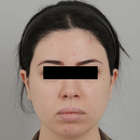
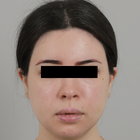
Front view
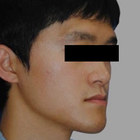

Front view
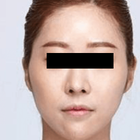

Front view


Front view
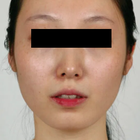
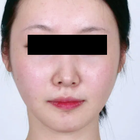
Front view
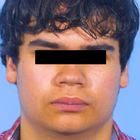
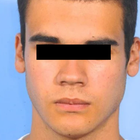
Front view
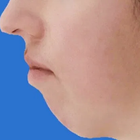
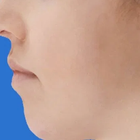
Full-side view
WHY US?
At Medijump, we're making medical easy. You can search, compare, discuss, and book your medical all in one place. We open the door to the best medical providers worldwide, saving you time and energy along the way, and it's all for FREE, no hidden fees, and no price markups guaranteed. So what are you waiting for?

Free

Best Price

Widest Selection

Risk-Free
What you need to know about Jaw Shaping in Bali

Also known as Mandibular Angle Reduction, V Line Surgery or Jawline Surgery, Jaw Shaping Surgery is performed with the purpose of narrowing the lower part of the face, with particular emphasis on the mandible (lower jaw) and the muscular attachments.
A wide jaw angle can be caused by enlarged muscle, bone, or a combination of the two. A prominent jaw angle or square jaw is considered a masculine trait, particularly in Asian countries. Therefore, many people opt for surgical correction to get their desired look. The surgery can shorten an overly long jaw and change a square-shaped face to an oval shape. Some people with temporomandibular joint (TMJ) disorders, uneven jaws, or jaws that causes pain when chewing might also undergo this surgery to correct pain.
There are several critical elements involved in the surgery, including the angles of the jaw, the body of the mandible, and the shape of the chin. While the procedure is typically performed on women with a square jawline who want a more feminine look, it can be done on both men and women. However, this procedure may not work for people who want to feminize a male’s face since males usually have a taller and longer face. Therefore, a V Line Surgery would only make a face look more elongated.
What does a Jaw Shaping Procedure Involve?
Various developmental, congenital, or some rare disorders such as acromegaly can cause enlarged mandibles, which can be corrected by Jawline Surgery. It is ideal for those with overly square or U-shaped jawline, overly manly jaw shape, bloated cheeks, and double chin. If you are considering V line surgery, you will need to be in a good state of physical and mental health.
Prior to the surgery, you will be examined by X-rays and 3D CT scans. Your surgeon will analyze and evaluate the overall structure of your jaw to create a plan to produce the desired result. You will also need to undergo medical tests such as ECGs to ensure that you don’t have a condition that may put you in danger or compromise the success of the surgery.
Surgery is performed under general anesthetic through tracheal intubation and leaves minimal scarring. You will need to fast for 8 hours before the surgery. Oscillating saws are used to reshape the jaw. The surgery can be performed inside the mouth (intraoral) or from outside the mouth (postauricular). The intraoral approach is the most widely used method. With this approach, an incision is made between the gum and the back of the cheek next to the jaw. Then, the jawline is carved out into their desired shape. A portion of the masseter muscle is shaved off, and the outer portion of the bone is chipped off. This approach is best for patients who aim to narrow their frontal view since the change is subtle and natural.
If the patient wants to change the appearance of the jaw angle from a side view, the overall contour of the bone will need to be changed. This means that the patient needs a full-thickness bone removal. Although it can be done through the intraoral approach, the surgeon’s view during this approach is very limited, which can decrease the precision of the procedure. Therefore, the best approach is from outside of the mouth or postauricular. To get direct access to the bone, the surgeon makes an incision hidden around the ear. This approach can remove a more substantial amount of bone. The recovery time using this approach is also much shorter than the intraoral approach since the swelling stays confined to the neck area.
How Long Should I Stay in Bali for a Jaw Shaping Procedure?
The typical length of time for Jaw Shaping is usually around 2 hours. Nevertheless, you have to stay in the hospital for around one to two days for initial recovery where you will be monitored to make sure everything is fine. After being discharged, plan to stay in the Bali for 10 to 14 days or until the surgeon says you can go home. The stitches are generally removed within two weeks after surgery, though this may vary from patient to patient.
What's the Recovery Time for Jaw Shaping Procedures in Bali?
Immediately after the surgery, you will need to wear a facial mask that presses tightly against the skin around the jaw to keep the post-surgery swelling down. Also, you will not be allowed to eat foods that require chewing because it will delay the recovery and can cause bleeding. If you undergo the intraoral approach, your food intake will be limited for a considerable length of time. You may feel some swelling, numbness, and discomfort around the incision for several days, but the surgeon will prescribe medications to help with the pain.
The recovery period can be different for each individual; some people may be able to go back to their regular routines after seven to ten days, but others may need more time to fully recover. Avoid doing any vigorous activity that increases your blood pressure for several weeks, such as jogging and other exercises. Most of the visible signs, such as swelling and bruising, should disappear within a few weeks. Symptoms such as hematoma and infection are common, and will usually subside within three to six months post-surgery.
What sort of Aftercare is Required for Jaw Shaping Procedures in Bali?
You must follow your surgeon aftercare instructions strictly to accelerate your recovery and minimalize possible complications. The instruction will likely include the following recommendations:
- Food intake. You may need to consume a liquid diet for a week after surgery as drinking your food is less painful and prevents trauma to the jaw area. You should be able to consume hard foods within one month.
- Oral hygiene. An antibacterial mouth rinse will keep your mouth and incision area clean, which will decrease the possibility of infection.
- Avoid tobacco and alcohol. Smoking and drinking alcohol should be avoided for a while.
- Keep the head elevated. You should keep your head elevated even when you are sleeping as it is the key to reduce swelling.
- Compression bandage. You are recommended to wear a compression bandage at all times for the first three days and while sleeping for the first week or two.
- Avoid strenuous activity. Do not do any heavy lifting or exercise for at least a month. However, do walk around and practice some gentle movement.
- Attend follow up appointments. The surgeon will check your progress to avoid any complications.
What's the Success Rate of Jaw Shaping Procedures in Bali?
Jaw shaping surgery is a safe procedure when performed by a trained surgeon. Around 94% of patients express their satisfaction with this procedure. However, it is important to have realistic expectations. You should also be aware of the possible risks that this surgery may cause. These risks include infection, asymmetry, seroma, deep vein thrombosis, pulmonary embolism, and hematoma. Partial numbness of the jaw can also happen due to nerve damage.
Are there Alternatives to Jaw Shaping Procedures in Bali?
If you wish to reshape your jaw but do not want to undergo surgery, there are non-invasive options available. The most popular alternatives are Botox and Dysport, which can effectively contour the jaw by relaxing the appearance of a square jaw. This procedure shrinks the masseter muscle by weakening it. These injectable can also be used to correct facial asymmetry around the jawline area. Since they are non-invasive, you can return to your daily activates right away and they offer a subtler shift in your appearance. However, these techniques are limited to cases in which the masseter is enlarged and may not work as well as V Line Surgery.
Whilst the information presented here has been accurately sourced and verified by a medical professional for its accuracy, it is still advised to consult with your doctor before pursuing a medical treatment at one of the listed medical providers
No Time?
Tell us what you're looking for and we'll reachout to the top clinics all at once
Enquire Now

Popular Procedures in Bali
Prices Start From $70

Prices Start From $28

Prices Start From $1,945

Prices Start From $275

Recommended Medical Centers in Bali for Jaw Shaping

- Interpreter services
- Translation service
- Religious facilities
- Medical records transfer
- Medical travel insurance
- Health insurance coordination
- TV in the room
- Safe in the room
- Phone in the room
- Private rooms for patients available

- Interpreter services
- Translation service
- Religious facilities
- Medical records transfer
- Medical travel insurance
- Health insurance coordination
- TV in the room
- Safe in the room
- Phone in the room
- Private rooms for patients available

- Interpreter services
- Translation service
- Religious facilities
- Medical records transfer
- Medical travel insurance
- Health insurance coordination
- TV in the room
- Safe in the room
- Phone in the room
- Private rooms for patients available

- Interpreter services
- Translation service
- Religious facilities
- Medical records transfer
- Medical travel insurance
- Health insurance coordination
- TV in the room
- Safe in the room
- Phone in the room
- Private rooms for patients available

- Interpreter services
- Translation service
- Religious facilities
- Medical records transfer
- Medical travel insurance
- Health insurance coordination
- TV in the room
- Safe in the room
- Phone in the room
- Private rooms for patients available

- Interpreter services
- Translation service
- Religious facilities
- Medical records transfer
- Medical travel insurance
- Health insurance coordination
- TV in the room
- Safe in the room
- Phone in the room
- Private rooms for patients available

- Interpreter services
- Translation service
- Religious facilities
- Medical records transfer
- Medical travel insurance
- Health insurance coordination
- TV in the room
- Safe in the room
- Phone in the room
- Private rooms for patients available

- Interpreter services
- Translation service
- Religious facilities
- Medical records transfer
- Medical travel insurance
- Health insurance coordination
- TV in the room
- Safe in the room
- Phone in the room
- Private rooms for patients available

- Interpreter services
- Translation service
- Religious facilities
- Medical records transfer
- Medical travel insurance
- Health insurance coordination
- TV in the room
- Safe in the room
- Phone in the room
- Private rooms for patients available

- Interpreter services
- Translation service
- Religious facilities
- Medical records transfer
- Medical travel insurance
- Health insurance coordination
- TV in the room
- Safe in the room
- Phone in the room
- Private rooms for patients available
Jaw Shaping in and around Bali
About Bali
Bali is an Indonesian province located on the west side of the Lesser Sunda Islands. It is the country’s main tourist hotspot that attracts millions of tourists each year. The beaches are tranquil and perfect for any sun-seeker, the marine life is one of the most diverse in the world, the culture is beautiful, and the mountains are covered in lush jungles and great for hiking. In addition to the natural and cultural beauty, there are myriad of things that tourists can do here, from yoga, partying, surfing, to horseback riding.
Bali is not only full of fascinating beaches, but this tropical paradise also boasts many high-quality medical facilities offering various types of treatments. The island continues to upgrade its infrastructure and develop its medical centers to compete with neighboring countries, such as Singapore and Thailand. Medical tourists are able to avail of a wide range of treatments including cosmetic surgery and at affordable rates. The medical centers have modern equipment, and there is little to no waiting time for almost every procedure. Additionally, the island is also equipped with exclusive yoga centers, Bali-traditional spas, and Jamu traditional medicinal herbs.
Popular Areas in Bali
- Seminyak is known to be the most luxurious area in Bali. Tourists will find many fashionable boutiques, upscale restaurants, and exclusive clubs. In the afternoon, tourists can soak up the sun while sipping a cocktail in one of its famous beach clubs or take a beginner surfing lesson at one of its beaches. The main beach is Petitenget Beach where tourists can enjoy magical sunsets or swim in its warm waters. The area is also home to Bali’s best cafés, which makes café hopping a must-do event.
- The Nusa Islands is located around 20 kilometers offshore from the main island and can only be accessed by boat. It consists of three islands: Lembongan, Ceningan, and Penida. The most popular and the closest to the main island of Bali is Nusa Lembongan. The biggest is Nusa Penida and the smallest is Nusa Ceningan. The three islands offer tranquil and almost-empty beaches, which is perfect for anyone who wishes to stay away from crowds.
- Ubud is the island’s jungle paradise that still retains numerous aspects of traditional Balinese. It is the place for tourists who wants to immerse in Bali’s culture and nature. There are various beautiful temples, dance shows, and historical sites within the area. The most popular place is Ubud Monkey Forest or the Sacred Monkey Forest Sanctuary, which is a sacred temple, an evocative jungle, and natural habitat of monkeys.
- Sanur is Bali’s earliest beach resort and is located on the eastern side of the island; it contains some of the island’s first hotels. The area is known to be family-friendly as well as one of the best places to enjoy Bali’s magnificent sunrises. Sanur is very quiet which makes it the perfect place for relaxation. Wander around for a day and you will find many major cultural landmarks hidden in plain sight.
- Canggu is famous for its green rice fields, dark sandy beaches, and healthy food. This up-and-coming area is also filled with cool cafes and vegan restaurants. It is also a prime spot for surfing since the beaches have massive shore breaks. One of the most famous places in the area is the Pura Tanah Lot Temple as it is a famous seaside religious site located on top of a rock formation, which offers a picturesque view.
Weather and Climate in Bali
Bali enjoys warm and comfortable weather all year round. The tropical island experiences two seasons: dry and wet. The dry season starts in April and ends in October. The average temperatures during this season are between 23 °C to 31 °C. June to August are the driest months, making them the best months to visit the island. The wet season is from November to March. Expect to find many rainy days during the wet season. The temperatures are generally similar to the dry season, but the humidity will increase significantly.
Getting Around in Bali
I Gusti Ngurah Rai International Airport is the main gateway to Bali and it is located 13 kilometers south of Denpasar and is the second busiest airport in Indonesia. The airport has international connections with major cities around the globe, including Bangkok, Melbourne, Moscow, and Guangzhou. It also serves domestic flights to many regions within Indonesia. The most affordable way to travel to and from Bali is by flying with budget airlines, such as AirAsia, Citilink, and Lion Air.
There are several ways to get around Bali. Most of the transportation options are very affordable. Hiring a motorcycle is the fastest option, but if you do not like the idea of driving by yourself, you can try the motorcycle taxis known as ‘ojek,’ which can be hailed directly from the streets or by using apps such as Grab and Go-Jek (similar to Uber). The apps also provide private cars and food delivery. Taxis are widely available and run on a meter. The most reliable taxi companies are Blue Bird and Express.
Tourist Visas in Bali
Indonesia is known to be a visa-friendly country since most developed countries can enter without a visa. The country allows a citizen of 170 countries to enter and stay for up to 30 days. Citizens of Japan, the United Kingdom, the United States, and 65 other countries can apply for a visa on arrival. It is best to check at the nearest Indonesia Embassy or Consulate to find out if you need a visa or not. All visitors are required to have a visa valid for at least 6 months.
Additional Information
- Local Currency: Indonesian Rupiah (Rp) is the official currency, and $1 converts to Rp14.000.
- Money & Payments: Tourists will find ATMs that accept international cards almost everywhere (mostly Visa and MasterCard). Credit and debit cards are accepted in many shops, restaurants, and hotels. Tipping is not expected but will be greatly appreciated.
- Local Language: The official language is Bahasa Indonesia, and most people will also speak Balinese. English is widely spoken, especially in tourist areas.
- Local Culture and Religion: Most people in Bali follows Hinduism, and almost every aspect on the island is submerged with the Hindu faith. There is also a large group of Muslims as well as small group groups of Christian and Buddhists.
- Public Holidays: Bali celebrates major religious holidays, including Nyepi (Silent Day), Eid Mubarak, Christmas, and Vesak.
Popular Searches
- Plastic Surgery in Thailand
- Dental Implants in Thailand
- Hair Transplant in Thailand
- Breast Augmentation Thailand
- Gastric Sleeve in Thailand
- Gender Reassignment Surgery in Thailand
- Laser Hair Removal in Bangkok
- Botox in Bangkok
- Dermatology in Bangkok
- Breast Augmentation in Bangkok
- Coolsculpting in Bangkok
- Veneers in Turkey
- Hair Transplant in Turkey
- Rhinoplasty in Turkey
- Stem Cell Therapy in Mexico
- Rhinoplasty in Mexico
- Liposuction in Mexico
- Coolsculpting in Tijuana
- Rhinoplasty in Korea
- Scar Removal in Korea
- Gastric Sleeve in Turkey
- Bone Marrow Transplant in India
- Invisalign in Malaysia
- Plastic Surgery in the Dominican Republic
- Tummy Tuck in the Dominican Republic
- Plastic and Cosmetic Surgery in Poland
- Rhinoplasty in Poland
- Hair Implant in Poland
- Dental Implants in Poland
- IVF in Turkey

